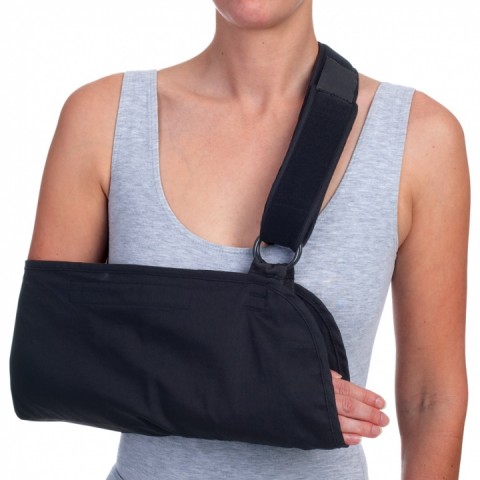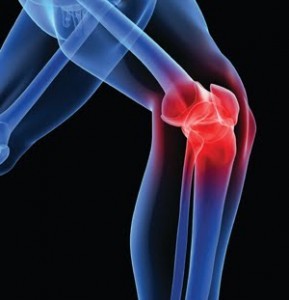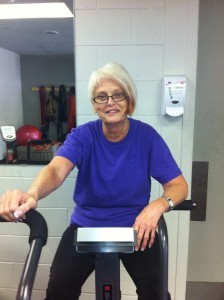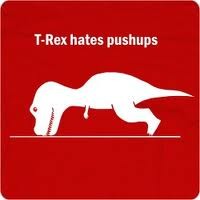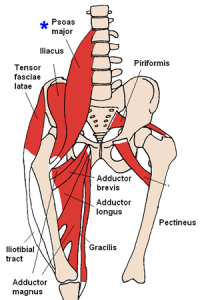There's an expression in sports that 'you play, you pay'. And this refers to getting injured. You play frequently enough and push yourself enough and you will suffer an injury. It's not a case of 'if' but 'when' and when that happens, check more for personal injury lawyers. Most athletes know what I'm talking about and have spent time in an ER, in a sling, on crutches or a wheelchair. I'd have to say being injured is the worst part of sports. Worse than losing. Because when you're injured you can't play. You can't help your team. And if things aren't going well it's even worse. You have to wait it out, go for your rehab appointments and wait for the OK to return to training and competition. A recently study looked at how training the non-injured side minimized the losses that typically occur to the injured side. What the researchers did was have 30 subjects, male and female, between 18-34 years, put their non-dominant arm in a sling for 8 hours per day. The elbow was bent to 90 degrees and then immobilized for the 8 hours. The non-dominant arm was determined as the non-writing arm. All subjects had the non-dominant arm immobilized for 8 hours per day. The 30 subjects were then assigned to one of three groups. The first group did no exercise, the second did eccentric and concentric exercise and the third group did eccentric only exercise. The tempo for the eccentric and concentric group was 2 seconds up and 2 seconds down. And for the eccentric group the participants took 4 seconds to lower the weight. The exercise performed was a biceps curl over a preacher bent with a dumbbell. For the eccentric only group the researcher grabbed the dumbbell at the bottom of each rep....
Knee Solution Seminar Thursday November 8
- Chris Collins
- Fitness
- 1717 Hits
- 0 Comments
-
======================KNEE SOLUTION SEMINAR====================== Do you have knee pain?Have you suffered a knee injury?Does this joint limit the sports and activities you do? [caption id="attachment_5348" align="aligncenter" width="289"] Come learn why we have knee problems and what we can do about it If you answered 'yes' to any of these, or would like to continue having strong and healthy knees, than you should join us for our Knee Solution Seminar on Thursday November 8 @ 6 pm. The presentation will take place at Mountain Equipment Coop (MEC) located at 1876 Cooper Road. During the presentation you will learn about:* The structure and proper alignment for the knee* Why we experience so many knee injuries* What we can do to have strong and healthy knees All are welcome. Pre-registration is required. To register send an email to
Knee Replacement to Pain-free Squatting
- Chris Collins
- Fitness
- 1827 Hits
- 0 Comments
-
Do you have knee pain? Maybe it's from a sports injury and you've damaged some of the structures of the knee. It could be that you've had a knee replacement and the recovery has had some complications. Or maybe you haven't had a formal diagnosis such as a torn ACL or meniscus. But certain movements and activities cause pain and discomfort. So much so that you've given up skiing and pick-up basketball. And it's not that you don't enjoy these sports anymore but that the pain, discomfort and swelling just isn't worth it. As someone who has had bilateral ACL reconstructions I can related to those suffering from knee pain. And I can appreciate the demands on this joint when skiing, playing football or even going for a long walk on the beach with my daughters. Recently we had the opportunity to work with Gerry F. to help him after his knee replacement. I've known Gerry for a number of years through our church and school. And I'd see him at the hockey games on a weekly basis. Each week I'd notice an improvement in his gait and less reliance on the cane. He seemed to be on or even ahead of pace for his recovery. But then the recovery got stuck. And the pain didn't continue to subside. And the range of motion didn't continue to improve. Maybe this was all Gerry could expect from his recovery? We should know that surgery doesn't bring us back to 100% of our pre-injured state. How close to 100% is possibe we can never know and this varies from person to person. So Gerry came to see us and find out what we would recommend in terms of a coaching and programming protocol to help him push past the current state of his knee. When...
The What, How & Why of Warming Up
- Chris Collins
- Fitness
- 1792 Hits
- 0 Comments
-
Welcome to 2018! As we turn the calendar on a new year many will be embarking on a new fitness routine. With more people getting started in fitness there will be more injuries on the way. What can we do to make sure our fitness efforts are safe and effective?One of the things we want to make sure to do is to warm-up properly for exercise. If you've ever attended a track and field meet and watched the 100 m race you'll notice something.Although these athletes will only race for 10-12 seconds depending on the level, they will warm-up for much longer than that. Elite sprinters won't arrive at the track 30 minutes before their race to lace up and pull a heel to their glutes. Instead their warm-up could last hours. And this is to enhance their performance and to minimize injury.So what does a warm-up do?A warm-up helps accomplish a couple of things. It helps improve muscle dynamics so we are less inclined to injury It helps prepare us for the demands of sport (or exercise)Regarding reducing the rate of injury, over 30% of sports/training injuries are related to skeletal muscles so it makes sense that we would want to prepare them adequately for the demands to come.Are there different ways to warm-up?Well are the different ways and different types. In terms of types we can think of active and passive warm-ups. Active warm-ups are things we do ourselves by moving our bodies. And these can be general, like jogging or ridding the bike before a training session, or specific with movements that mimic the demands of the sport or activity.Warm-ups can also be passive where we are warmed by external means. This could be by sitting in a sauna or a hot tub or having a warm shower.Does the...
Chin ups and TGUs at 70 years young
Hey! How’s it going? It’s Megan here and I’ve got a great success story to share with you. This story is about Lorie Talarico and she has realized some amazing results over the last bit with her training. You know Lorie, right? Out side of working full time as a beauty consultant at The Bay, Lorie likes to read in her spare time, do embroidery and in the summer spends lots of time gardening. Now before I get to telling everything Lorie has achieved in a short amount of time I should back up and give you the background. You see Lorie was someone who first came to us to see Chris and Okanagan Peak Performance Inc for advice. “Actually, you could say that pain brought me to see you guys. Between getting hit by a truck while out walking and then ending up with sciatica, which is 24/7 pain, I felt I needed help. My goal was just to get and feel better.” Maybe you can relate to Lorie in sharing these same challenges such as getting into an accident or having injuries, low back pain, or feeling intimidated, having an illness or something else standing in the way of optimal health? But even though Lorie had these challenges before her, she still had the goal of getting stronger and being able to move better and freely without pain. “Wow in the beginning I could barely move and getting down to start warm up exercises was very painful and humbling, as I could not get up with out assistance. It was tough to go to every class but I knew I had to get back into good condition. I had to deal with vertigo, back and hip pain and weakness in all of my muscles. The other challenge was how...
Fitness Coaching with Analogies
When it comes to coaching everyone has a different style. Sure we pick things up from different coaches here and there. We'll steal a tip from this one. We'll adopt a practice from that one. But for the most part we have to figure what our style is and then develop it to the best of our ability. Learning to Lift Analogies For me one of the things I like to use when coaching is analogies. Big surprise right! Why analogies? Well because it allows the coach and client to find a common reference point regarding the concept being addressed. It gets away from the specific language and terms that both people may people may not be familiar. Analogies can also make the experience more fun. Because when someone steps on the training room floor they be very unaware of the technique required to perform a lift. Some may think they know what they're doing and then as a coach when you watch them lift you realize they don't. So you need to step in and coach them. Here's how I like to coach a lift. Analogies Save Time & Money First, of all don't let someone continue performing lots of reps the wrong way. This just ingrains a poor motor program which is then harder to fix later. For example, I wouldn't look over and say to myself 'wow, that guy (or girl) is using terrible form on their deadlifts! I should talk to them later.' That would be like watching someone drive past you in their car going the wrong way and you don't stop them. You let them continue on thinking they are making progress in the right direction but instead they are wasting time and money. Worse the path they are headed down may cause extensive damage...
Tight Hips - Real Client Solution
Do you remember one of the things many teachers would say at the beginning of the year? You know when everyone is new to a class and nobody feels comfortable to ask a question? And even when the teacher would put a question to the students everyone would stay quiet. And so at a certain point the teacher would say questions are great because usually there is someone else thinking the same thing. This is the inspiration for this post. Hopefully the content helps a number of you as well with your training. Let's get at it. The other day Joanne K. was doing front squats and mentioned that often feels restricted in the hips. I say hips plural because she mentioned that the restriction alternates between right and left depending on the day. [caption id="attachment_3037" align="alignleft" width="200"] Psoas, one of the hip flexors So here's what we did.First of all I took a look at Joanne's squat pattern. This involves looking all sides and examining for alignment, depth and symmetry. What stood out was there was a slight collapse of the left knee. Now we had something to address. First we had her foam roll the left adductor followed by an exercise to activate the left external hip rotator. For this we used a banded clam shell exercise. This took all of about 5 minutes, or less, to do. When Joanne retested her squat she said it was substantially better without a pinching at the hip. But what about the fact the issue seemed to alternate from right to left depending on the day? Well first we'll assume the warm-up and training is performed in a balance matter. Then the other thing to examine is activities of daily living which may contribute to this imbalance. In this situation we discovered...
